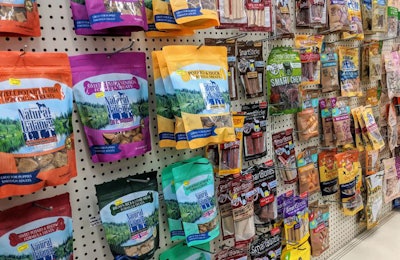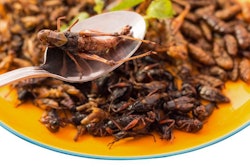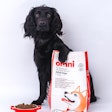
The National Institute of Standards and Technology (NIST), a part of the U.S. Department of Commerce, is responsible for the establishment of technical standards for a broad variety of purposes. Among its reference publications is Handbook 130 Uniform Laws and Regulations in the areas of legal metrology and fuel quality, which along with other guidance is widely employed by officials in determining compliance with regulatory requirements pertaining to net contents of packaged goods. Working under the auspices of NIST, the National Conference on Weights and Measures (NCWM) recently proposed the addition of a new definition to the handbook, namely:
2.37. Pet Treats or Chews – Digestible chews, rawhides, bones, biscuits, antlers or similar type products shall be sold by weight
The current status of this definition is unclear, in that it is not included in the Uniform Packaging and Labeling Regulation in the 2019 edition of the handbook. Nonetheless, this proposal has been the subject of considerable criticism within the pet food industry, prompting the submission of comments to NCWM by several trade organizations as well as the Association of American Feed Control Officials (AAFCO).
Arguments against the proposed definition
The main thrust of the argument against the proposal is that it contradicts existing regulations as enforced by other government entities. AAFCO model regulations are decidedly vague, only stipulating the need for a statement "by weight ... liquid measure ... or by count" without further specifics [AAFCO PF2(a)(3)]. Cited federal regulations include those of the U.S. Food and Drug Administration (FDA) [21 CFR 501.8] and the Federal Trade Commission [16 CFR 500.6 and 500.7]. Granted, from those citations alone, there does not appear to be any regulatory restriction as to the means by which net contents are expressed.
However, conspicuously missing from the discussion is a long-existing FDA regulation that adds the caveat:
21 CFR 501.105(c) When the declaration of quantity of contents by numerical count does not give adequate information as to the quantity of food in the package, it shall be combined with such statement of weight, measure or size of the individual units of the foods as will provide such information.
Admittedly, some types of dog chews, such as antlers, hooves and bones, are naturally variable in size, so, particularly for packaged items that contain one or a few units, it is very difficult to comfortably assign a net weight without running a sizable risk of either falling short or being way over the declared contents. Provided the contents of the package are visible at point of sale, though, it can be argued that the purchaser can reasonably assess the value of the goods sold and make an informed decision.
This gets harder to defend as the number of units per package increase, or when the size of each unit is more uniform (e.g., ground and formed rawhides, and especially biscuits). In those cases, frankly, count alone may not provide adequate information. One company's "10 chews" may in fact weigh more than another company's "20 chews," so just breaking the first company's chews in half would be the better value. Even qualification of the units (e.g., "large" vs. "small") would not be helpful without a standardized frame of reference upon which to compare products.
Potential revisions of the definition
In any event, it seems that the comments received by NCWM have had an impact. Although it does not appear that NCWM intends to drop the matter entirely, an agenda item for discussion at the 2019 NCWM meeting is a proposal to amend the definition. The verbiage as originally proposed would remain, but with the added language "except when a package can only be properly measured in terms of count only (sic), and the individual unit is visible to the purchaser, such packages may be sold by count."
This revised proposal appears more in keeping with the perspective of FDA. As amended, the definition would put the burden on the manufacturer; e.g., if challenged by a weights and measures inspector, the company would have to justify why it is not feasible to include a declaration of net weight. A majority of the states exempt many of these types of products from registration and labeling requirements under AAFCO's Statement of Uniform Interpretation and Policy #27 anyway, so it's not going to be a high priority issue for most feed control officials.
However, and regardless of how the NIST proposal is resolved, that does not wholly shield manufacturers from potential action, because the FDA regulation requiring additional information when count alone is inadequate is still on the books. Thus, it may be very prudent for manufacturers to include a net weight declaration on all chew packages unless they are prepared to argue a persuasively sound reason not to do so.



















